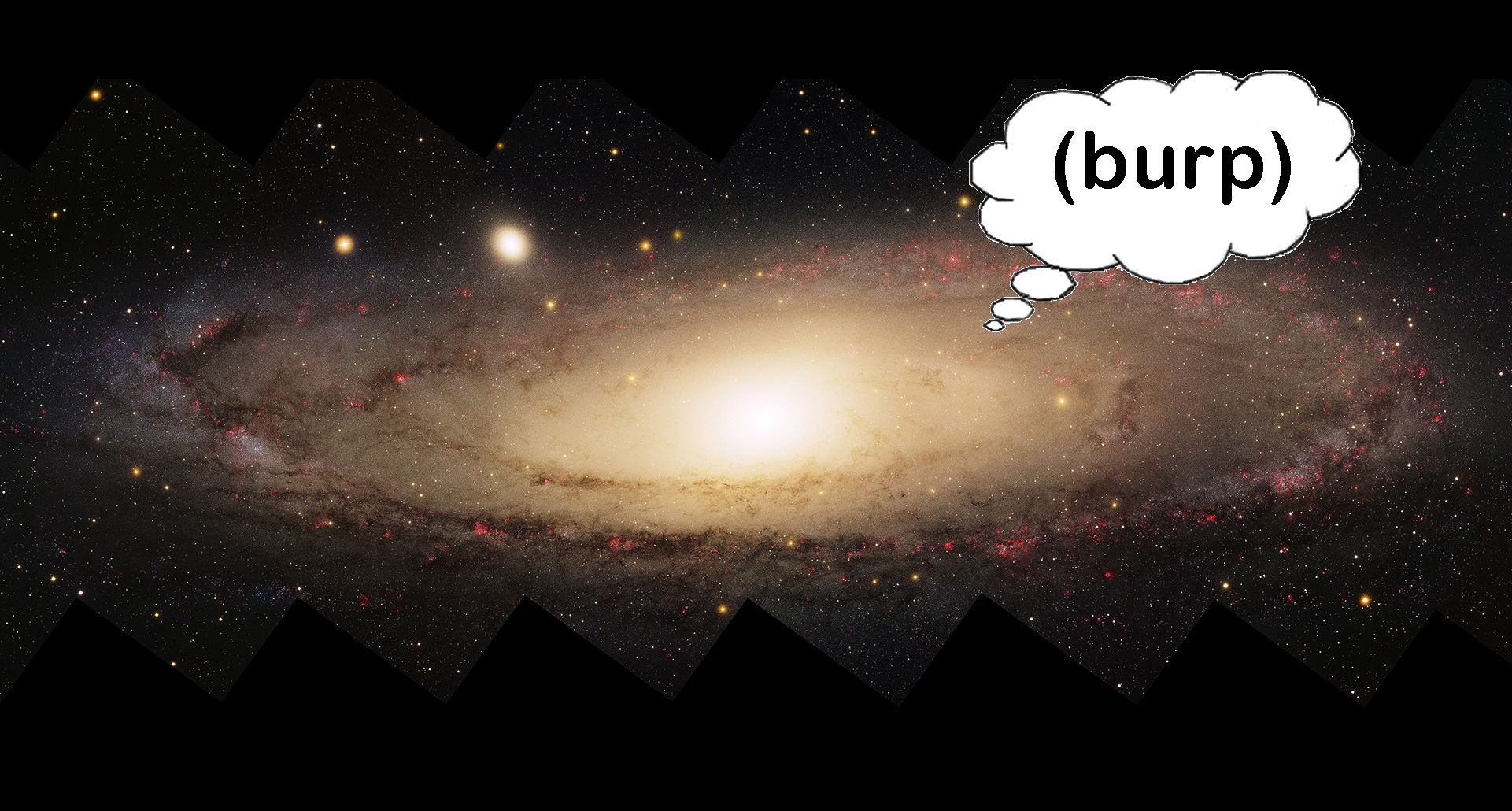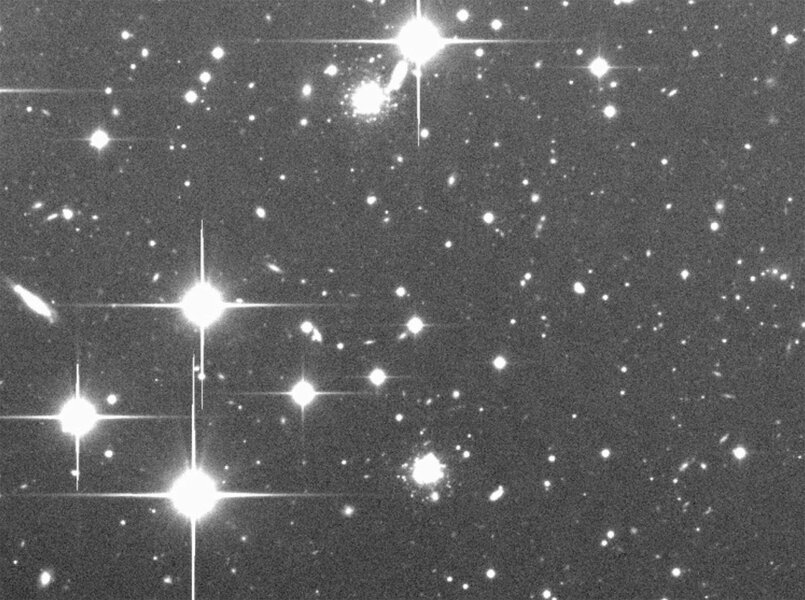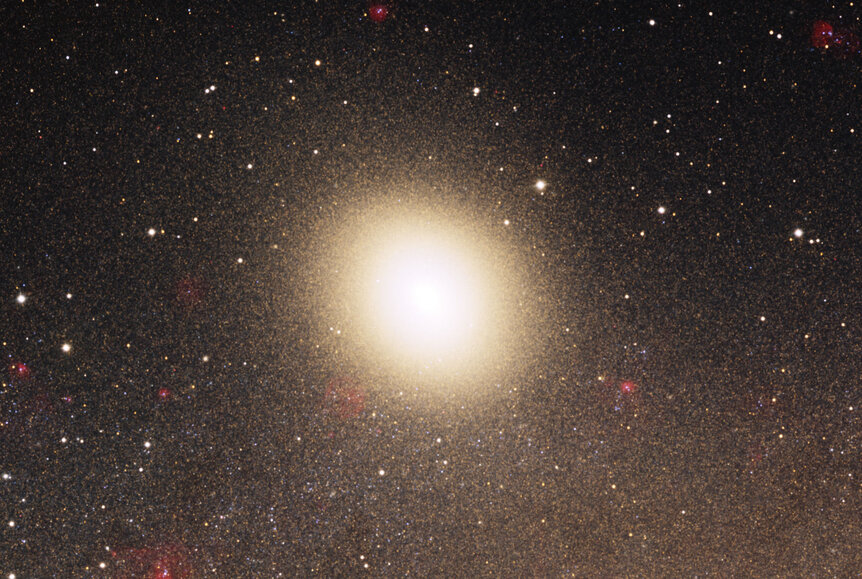Create a free profile to get unlimited access to exclusive videos, sweepstakes, and more!
The Andromeda Galaxy ate its small friends… twice

Astronomers using a vast survey of the sky around the Andromeda Galaxy have found evidence that it has had two huge meals in the distant past, two separate events where smaller galaxies were physically consumed by the far larger one. Both events were long ago, and one was much earlier than the other, but — like a gourmand with both ketchup and mustard stains on their shirt — the evidence remains.
At a distance of 2.5 million light years, Andromeda is our closest large galactic neighbor. It's a spiral galaxy, like the Milky Way, and has very roughly the same mass (about 1–2 trillion times that of the Sun). It's bigger than us at about 200,000 light years wide, and has roughly twice as many stars. It's so close and big that it can be seen with the naked eye from mildly dark skies.
Like our galaxy, Andromeda has two major components: a flat disk (with spiral arms) made up of old and younger stars, and a huge halo of old stars surrounding it. Both outside and inside this halo are several smaller galaxies, including M32 and NGC 205, both of which are visible using a small telescope.
Also like the Milky Way, it has a coterie of globular clusters orbiting it (though it has roughly 450 known compared to our 150). These are compact collections of hundreds of thousands of stars, usually packed into a sphere a few dozen light years across. Globular clusters tend to be old, many billions of years in age, and it's becoming clearer with time that many if not most used to actually be dwarf galaxies in their own right. Interactions with their much bigger host galaxy strips them of their outer stars — when it comes to gravity, might makes right, so the more massive galaxy wins — leaving behind the compact core.
These globular clusters were the key to the new finding. The astronomers used the 3.6-meter Canada-France-Hawaii Telescope to conduct a vast survey of the sky — 20° across, 40 times wider than the Moon in the sky! — around both Andromeda and another, though smaller, nearby spiral called the Triangulum Galaxy (which is about 2.9 million light years from us). They called this the Pan-Andromeda Archaeological survey (or PAndAS, haha, though it uses multiple filters so the name is not that black-and-white), which was designed to get very deep (that is, find very faint objects) out to a distance of about 500,000 light years from the center of Andromeda.
The survey detected huge numbers of stars in Andromeda's halo, including some interesting structures there. Most of the halo is smooth, but several obvious streams and clumps of stars were seen as well. This can be expected when a smaller galaxy is eaten by a bigger one; the stars are torn out of the smaller galaxy by the bigger one's gravity, leaving behind a trail of debris.
The survey also revealed dozens of globulars out past 80,000 light years from the galactic center; out of 92 observed they used various telescopes to obtain spectra of 77 to get their velocities around the galaxy (this actually gives the line-of-sight velocity; that it, the velocity toward or away from us due to the Doppler shift, but this gives a good idea of the globulars' velocities around Andromeda, especially when analyzed statistically).
Coupled with the terrifically deep images, this revealed two distinct populations of globular clusters. One is just a group that doesn't appear to be in any structure, so each cluster is just out there orbiting the galaxy on its own (they found 34 globulars in this group). The other group (with 43 members) has globulars that are directly on top of the structures, and therefore likely to be in them. This in turn means the structures are from stars pulled out of the globulars.
OK, that's cool, but it gets better. The two groups appear to be moving in distinctly different directions! The halo clusters seem to be orbiting the galaxy with essentially the same orientation and direction as stars in the galaxy's disk, while the globulars that are part of structures have orbits oriented nearly 90° from the other group! This means they are clearly two different populations.
It's likely that the first group was part of a massive act of cannibalism a long time ago, so far in the past that the stars ripped away from the smaller galaxies had time to disperse and just become part of the general halo. The second group was part of an event that happened more recently, and the stars haven't had time to disperse yet. Think of it like drops of food coloring in a glass of water; right after you add one to the water the structure of the dye is coherent, but after time the dye disperses and spreads out over the entire glass.
They can't tell how old the groups are, though they were probably billions of years apart, and the more recent one was still billions of years ago.
Galaxies grow through these acts of cannibalism; every big galaxy in the sky (including ours) grew this way. On top of these two events, around two billon years ago Andromeda ate what may have been the fourth or fifth largest galaxy in our Local Group! So it's pretty common. By studying the remnants of these encounters — think of it as galactic archaeology — we can learn a great deal about not just how galaxies grow, but also what their environments were like in the distant past.
This isn't just idle curiosity, either: In about 4.6 billion years, Andromeda and the Milky Way will collide in a spectacular cosmic train wreck, taking about a billion years to merge into a single, much larger galaxy (which most astronomers call Milkomeda, which I think lacks grace as a name, but I can't think of anything better). Studying ancient collisions, and others we see in deeper space, is a way of studying our own inevitable future.
Plus it's just cool and interesting. Galaxies eat each other! And they're messy eaters! And we can use their sloppily strewn leftovers to figure out what they're doing know, what they did eons ago… and what their next big meal is going to be.
















